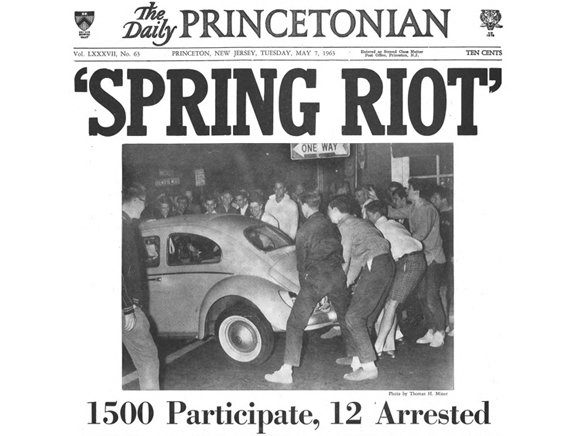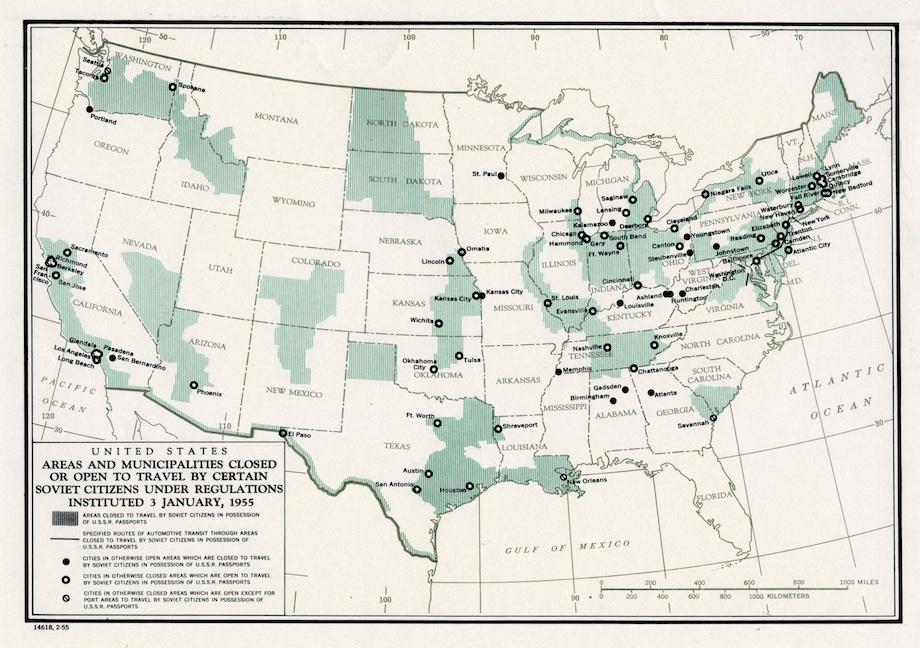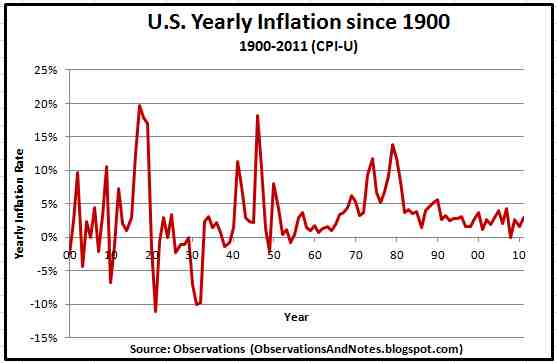This table summarizes the New Deal programs we will address in class. It also offers some arguments for/against each program.
Spend some time wrapping your head around the scope of the New Deal reforms.
This table summarizes the New Deal programs we will address in class. It also offers some arguments for/against each program.
Spend some time wrapping your head around the scope of the New Deal reforms.
Under Lagos’s energetic governor, much lauded in the international financial media, this crowded megalopolis of high rises, filthy lagoons, fierce traffic jams and sprawling slums, home to perhaps 21 million people, has proclaimed its ambition to become the region’s, if not Africa’s, premier business center.
Infrastructure and housing projects abound, including a light-rail network whose trestles already vault crowded neighborhoods, and a vast upmarket Dubai-style shopping and housing development built out into the Atlantic Ocean, inaugurated last week by former President Bill Clinton. A new Porsche dealership has opened in the financial district.
In this gleaming vision, the old Lagos of slums has an uncertain future. Two-thirds of the city’s residents live in “informal” neighborhoods, as activists call them, while more than one million of the city’s poor have been forcibly ejected from their homes in largely unannounced, government slum clearances over the last 15 years.
Many said they were given 20 minutes, at most, to pack up their belongings.
A 1968 episode of William F. Buckley’s Firing Line, featuring a drunken Jack Kerouac, the Fug’s Ed Sanders and a clueless academic, Lewis Yablonsky, discussing the “Hippie” movement.

Fifty years ago this week, panty-seeking college boys lit the fuse on the 1960s.
“Imagine being the typical 20-year-old American-male college student in May of 1952. You have come of age in the new era of the American teenager. You are living in close quarters with thousands of peers amid a campus boom made possible by the GI Bill. Whether you study rocket science or history, you are being trained to win the Cold War. You are eligible to be drafted to kill and die in Korea, but you cannot vote, and you cannot spend the night with your girlfriend, and you cannot console yourself by rocking out to “(I Can’t Get No) Satisfaction” because Mick Jagger is still 8 years old. Which is not even to mention that homosexuality is grounds for expulsion. You have been waiting for spring. You have been studying Robert Herrick in English lit. The leaves are on the trees. The sun is in the leaves. The personal is the political, but there aren’t yet any second-wave feminists to say so. The sap is rising in the trunk. The panty-raider’s pursuit of unmentionables is sometimes a conscious act of political speech, sometimes the unconscious expression of teen lust in a repressive climate.”
Matthew Parris is joined by Christopher Hitchens who nominates Leon Trotsky for great-life status, and the historian Professor Robert Service who argues against him.
This map shows where Soviet citizens, who were required to have a detailed itinerary approved before obtaining a visa, could and could not go during their time in the United States. Most ports, coastlines, and weapons facilities were off-limits, as were industrial centers and several cities in the Jim Crow South.
These restrictions mirrored Soviet constraints on American travel to the USSR. Both the United States and the Soviet Union had closely controlled the movement of all foreign visitors since World War II. A 1952 law in the U.S. barred the admission of all Communists, and therefore of Soviet citizens.
The Soviets’ decision to relax their controls after Joseph Stalin’s death in March 1953 left the U.S. open to charges that it, not the USSR, was operating behind an Iron Curtain. President Eisenhower and his foreign policy advisers decided to mimic Soviet policy as closely as possible: As of early 1955, citizens of either nation could enter approximately 70 percent of the other’s territory, including 70 percent of cities with populations greater than 100,000.
Travel restrictions on Soviet private citizens stayed in place, enforced by the Departments of State and Justice, until the Kennedy administration unilaterally lifted them in 1962 as a symbol of the openness of American society. Controls on visits from journalists and government officials, by contrast, lingered until the end of the Cold War. As the recent story of the American diplomat arrested in Moscow on charges of CIA recruitment activities suggests, the history of mutual suspicion still occasionally surfaces.

The State Department, still with “egg on its face” from its statement that Keystone XL would have little impact on climate change, sunk a little lower today as the most respected elders, and chiefs of 10 sovereign nations turned their backs on State Department representatives and walked out during a meeting. The meeting, which was a failed attempt at a “nation to nation” tribal consultation concerning the Keystone XL Pipeline neglected to address any legitimate concerns being raised by First Nations Leaders (or leading scientific experts for that matter).
Climate Science Watch, The EPA and most people with common sense rebuked the State Department’s initial report and today First Nations sent a very clear message to President Obama and the world concerning the future fate of their land regarding Keystone XL.
Vice president for conservation policy at the National Wildlife Federation Jim Lyon said of the department’s original analysis that it “fails in its review of climate impacts, threats to endangered wildlife like whooping cranes and woodland caribou, and the concerns of tribal communities.” Today tribal nations added probably the most critical danger of the pipeline which is to the water.





LETTER FROM BERKELEY By Calvin Trillin Published originally in The New Yorker, March 13, 1965
The conclusion of Mario Savio’s memorable speech, before Free Speech Movement demonstrators entered Sproul Hall to begin their sit-in on December 3, 1964
An article about Mario Savio appeared in the February 16, 1965 issue of Life Magazine (‘The university has become a factory”)
Several essays about the FSM from varying Leftist points of view
Margot Adler, “The Free Speech Movement”
A richly autobiographical account, woven from a freshwoman’s family letters and mature reflection, portraying the FSM as an early, vital episode in the education of a pagan feminist. (1964, 1996; 34 pp.)
Robert Hurwitt. “Present at the Birth: A Free Speech Movement Journal”
The detailed journals of a graduate student record his involvement during the early action (9/23-10/2) and climactic events (12/1-9). An evocative personal introduction and a very brief summary of the months between tie the entries together. (1964, 1984; 18 pp.)
Joel Pimsleur, “Inside Sproul Hall” as written to Ralph Gleason
A young reporter assigned to cover the Sproul Hall sit-in from inside writes about what he can’t report. (1964; 5 pp.)
Michael Rossman, “The Birth of the Free Speech Movement”
In a tape-recording made the next morning (10/3), a graduate student recounts the raw experience of the Police Car Sit-in, and recalls the developments leading to this crisis, launching the FSM’s historical project. (1964; 18 pp.)
Here are some films to choose from. All of them are awesome. Comment below if you strongly endorse one of these films and/or if you would like to propose an alternative (if you propose an alternative I will expect that you can bring it to class):
Village family-planning officers vigilantly chart the menstrual cycle and pelvic-exam results of every woman of childbearing age in their area. If a woman gets pregnant without permission and is unable to pay the often exorbitant fine for violating the policy, she risks being subjected to a forced abortion.
According to Chinese Health Ministry data released in March, 336 million abortions and 222 million sterilizations have been carried out since 1971.
It is not surprising that China has the highest rate of female suicide in the world. The one-child policy has reduced women to numbers, objects, a means of production
Baby girls are also victims of the policy. Under family pressure to ensure that their only child is a son, women often choose to abort baby girls or discard them at birth, practices that have skewed China’s sex ratio to 118 boys for every 100 girls.
The decision on Tuesday to bar the presidential candidacy of Ali Akbar Hashemi Rafsanjani, a founding father of the revolution and a former president, shocked Iranians, particularly those among the 70 percent of the population that is under 35 and grew up when he served in many leading positions.
The exclusion of Mr. Rafsanjani and another thorn in the conservatives’ side, Esfandiar Rahim Mashaei, could foreshadow even greater repercussions, analysts and commentators said.
Barring further surprises, the winner of the June election will now be drawn from a slate of conservative candidates in Iran’s ruling camp, a loose alliance of Shiite Muslim clerics and Revolutionary Guard commanders. That would place the presidency under their control and would mark the first time since the 1979 revolution that all state institutions were under the firm control of one faction.
Analysts have long speculated — and some conservative clerics have confirmed — that the ruling faction is determined to abolish the office of president.
At the very least, the anti-climactic election campaign seems likely to further reinforce the alienation of the urban classes, which make up a large portion of the electorate and mostly gave up on politics after the suppression of the 2009 uprising following Mr. Ahmadinejad’s re-election, widely dismissed as fraudulent. A major boycott of the vote could further undercut the government’s already diminished legitimacy.
The remaining candidates reflect the different shades of gray that now make up Iran’s establishment, a coalition of conservative clerics and Revolutionary Guard commanders known as the traditionalists.
Three of the qualified candidates have direct links to the country’s supreme leader, Ayatollah Ali Khamenei: Gholam Ali Haddad Adel, a close adviser and a relative by marriage; Ali Akbar Velayati, his foreign policy adviser; and Iran’s top nuclear negotiator, Saeed Jalili.
A fourth, Tehran’s mayor, Mohammad Bagher Qalibaf, has long presented himself as a technocrat but last week boasted publicly of having beaten protesting students as a police commander.
All of them say they are ready to fix the economy by using a “revolutionary mind-set” and to solve the nuclear dispute with the Western powers by convincing them that Iran’s position is just.
The question remains of what President Ahmadinejad will do now that his protégé, Mr. Mashaei, has been sidelined. His legacy has been tainted by his close relationship with Mr. Mashaei, whom traditionalists call a “deviant” for what they view as his liberal ideas on Islam. Many in his faction have charges of corruption being drawn against them, and the Revolutionary Guards have already hinted that they are ready to do whatever it takes, including the arrest of associates of Mr. Ahmadinejad, if they feel the revolution is under threat.


Background: In August 1968, the leaders of the USSR penned the “Brezhnev Doctrine,” which sought to justify Soviet domination over its neighbors. It stated:
“…when internal and external forces that are hostile to socialism seek to reverse the development of any socialist country in the direction of restoring the capitalist system, when a threat to the cause of socialism in that country appears, and a threat to the security of the socialist community as a whole, that is no longer only a problem for the people of that country, but also a common problem, a matter of concern for all socialist countries…
It goes without saying that such an action as military aid to a fraternal country to put an end to a threat to the socialist system is an extraordinary, an enforced step, which can be sparked off only by direct actions on the part of the enemies of socialism inside the country and beyond its frontiers –actions creating a threat to the common interests of the socialist camp.”
In December 1979, the Red Army moved forward into Afghanistan in an effort to keep in power Communist forces beset by growing civil war there. The Brezhnev Doctrine was used to explain this aggression.
In January 1980, the US formally announced its response. President Carter enunciated the “Carter Doctrine,” which stated that:
“An attempt by any outside force to gain control of the Persian Gulf region will be regarded as an assault on the vital interests of the United States of America, and such an assault will be repelled by any means necessary, including military force”
The Carter Doctrine Goes Global [Persian Gulf oil policy by Michael T. Kiare from The Progressive magazine, December 2004
Protecting the Oil Supply: What if the Chinese were to apply the Carter Doctrine? from Slate. 2008
On July 15, 1979, Carter gave a nationally-televised address in which he identified what he believed to be a “crisis of confidence” among the American people. This came to be known as his “malaise” speech, although Carter himself never uses the word in the speech.
I want to talk to you right now about a fundamental threat to American democracy. . . . I do not refer to the outward strength of America, a nation that is at peace tonight everywhere in the world, with unmatched economic power and military might. The threat is nearly invisible in ordinary ways. It is a crisis of confidence. It is a crisis that strikes at the very heart and soul and spirit of our national will. We can see this crisis in the growing doubt about the meaning of our own lives and in the loss of a unity of purpose for our nation. . . .
In a nation that was proud of hard work, strong families, close-knit communities, and our faith in God, too many of us now tend to worship self-indulgence and consumption. Human identity is no longer defined by what one does, but by what one owns. But we’ve discovered that owning things and consuming things does not satisfy our longing for meaning….
I’m asking you for your good and for your nation’s security to take no unnecessary trips, to use carpools or public transportation whenever you can, to park your car one extra day per week, to obey the speed limit, and to set your thermostats to save fuel…. I have seen the strength of America in the inexhaustible resources of our people. In the days to come, let us renew that strength in the struggle for an energy-secure nation.
Carter’s speech was written by Hendrik Hertzberg and Gordon Stewart. Though it is often said to have been ill-received,The New York Times ran the headline “Speech Lifts Carter Rating to 37%; Public Agrees on Confidence Crisis; Responsive Chord Struck” later that week
Here is the infamous speech and here is the transcript.


Jimmy Carter’s story is one of the greatest dramas in American politics. In 1980, he was overwhelmingly voted out of office in a humiliating defeat. Over the subsequent two decades, he became one of the most admired statesmen and humanitarians in America and the world. Jimmy Carter, part of AMERICAN EXPERIENCE’s award-winning Presidents series, traces his rapid ascent in politics, dramatic fall from grace and unexpected resurrection.
Here is the PBS site, with the original film and ancillary resources
This brochure advertises a Ku Klux Klan summer resort to be convened in 1924 near Rockport, Texas. The pamphlet offers KKK members a roster of family activities, including swimming, “watermelon parties,” and “big game fishing.” The excursion would even be educational: Klan members might “learn … what is a hammerhead, a dog fish, a sea urchin, blow fish, a drum or a porpose [sic].”
The Kool Koast Kamp (the KKK scattered Ks with abandon) was meant to serve people who are “not [usually] privileged to enjoy an outing such as this will afford.” Such families might “dream of a trip to Atlantic City or Palm Beach,” but then “crank up old Lizzie, throw the kids in and head for [the Kamp],” which would be “much cooler, much cheaper, more restful and greater sport.”
The brochure manages to work threatened whiteness—and, in particular, threatened womanhood—into its language, without directly referencing race. In the brochure’s illustration, a giant cross looms over the “shaded beach for complexion protection.” “Wonderful Mothers” are assured that “The Fiery Cross guards you at nights,” while “Beautiful Daughters” are told: “The sentiment reflected through humanity by the rays of the Fiery Cross makes you as safe on our Kamp as at home in Mother’s Arms.”
The actor and comedian recalls a bizarre recent encounter with the Iron Lady, and how it prompted him to think about growing up under the most unlikely matriarch-figure imaginable.
This is, I’m surprised to say, the best obit of Maggie I have read.